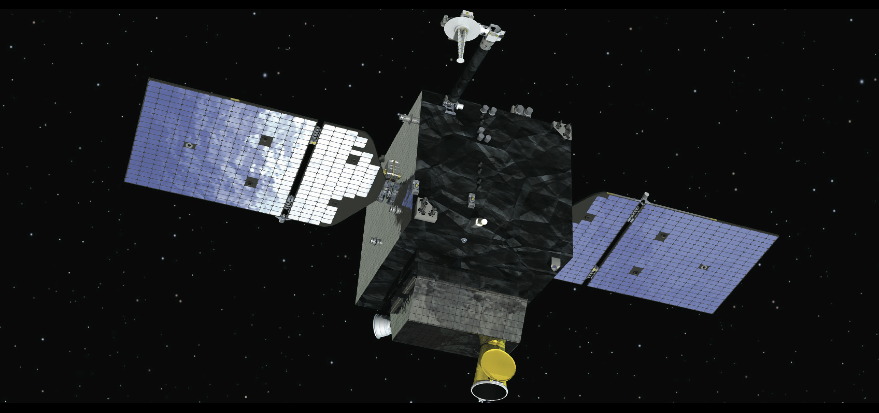US Air Force Eyes Blast Detection Satellite

WASHINGTON – The U.S. Air Force hopes to build an experimental satellite that would detect nuclear explosions and monitor the space environment from geosynchronous orbit, the service said in an Aug. 24 announcement.
The Space Test Program Satellite (STPSat) -6 would be the latest in a series of spacecraft developed under a Defense Department program to field space capabilities quickly in response to emerging military needs.
STPSat-6 is notionally scheduled to launch in late 2018 as the primary payload on a rocket to be selected via competition, presumably between SpaceX and United Launch Alliance, the Air Force said. That mission, called STP-3, will place multiple satellites into geosynchronous orbit, the statement said. [The Most Dangerous Space Weapons Ideas Ever]
In a request for information posted to the Federal Business Opportunities website, the Air Force's Space Test Program at Kirtland Air Force Base in New Mexico said it was looking for input from industry on how to build and fly the satellite. The service plans to use the resulting input to develop its acquisition strategy.
The primary payload aboard STPSat-6 is the Space and Atmospheric Burst Reporting System, or SABRS, which provides nuclear detonation detection and space environment data. The payload would complement nuclear detection sensors currently aboard GPS satellites.
STPSat-6 also could include as many as eight secondary payloads from the Space Test Program office, the Air Force said.
Project officials envision providing a partially assembled satellite bus from Orbital ATK of Dulles, Virginia, as government furnished equipment. Orbital ATK currently has the hardware at its Beltsville, Maryland facility, the notice said.
Get the Space.com Newsletter
Breaking space news, the latest updates on rocket launches, skywatching events and more!
The Air Force expects to spend $65 million on the program from 2016 to 2026 and hopes the satellite would operate for at least eight years, the posting said. The satellite would be placed into geostationary orbit between 80 and 120 degrees west longitude, the notice said.
STPSat-6 could be compatible with the Multi-Mission Satellite Operations Center (MMSOC), a satellite control architecture designed primarily for experimental and Operationally Responsive Space missions. The MMSOC was developed by Lockheed Martin along with the Air Force Space and Missile Systems Center's Space Development and Test Directorate and is viewed by some as the ground system of the future.
Responses from industry are due Sept. 24.
This story was provided by SpaceNews, dedicated to covering all aspects of the space industry.
Join our Space Forums to keep talking space on the latest missions, night sky and more! And if you have a news tip, correction or comment, let us know at: community@space.com.
Mike Gruss is a veteran defense reporter and Editor-in-Chief of Sightline Media Group, which includes Army Times, Air Force Times, Dense News, Military Times and Navy Times. From 2013 to 2016, Mike served as a Senior Staff Writer for SpaceNews covering national security space programs and military space policy in the U.S. Congress. Mike earned a bachelor's degree in English and American Studies from Miami University and has previously wrote for the Journal Gazette in Fort Wayne, Indiana and the Virginian-Pilot in Virginia before joining SpaceNews. Prior to joining Sightline in 2017, he was a senior editor of FedTech magazine covering technology in federal government. You can see Mike's latest project on Twitter.










